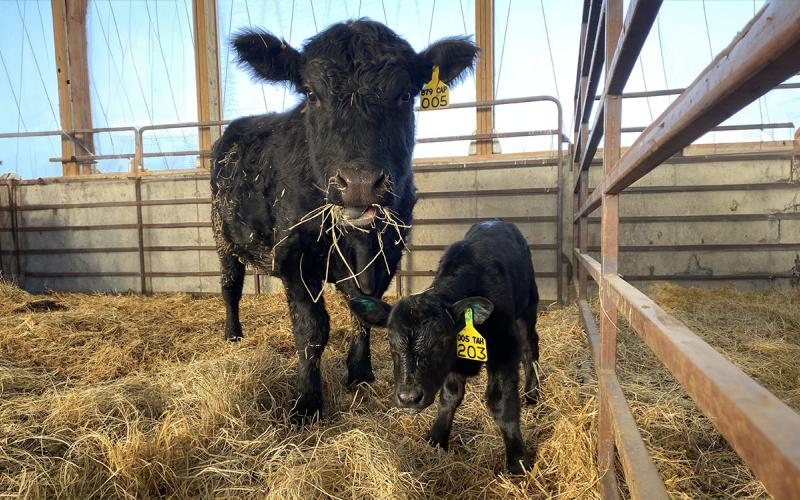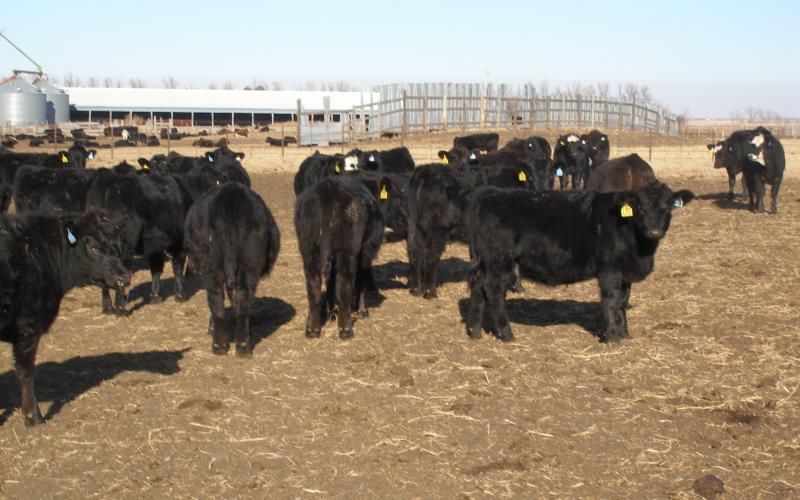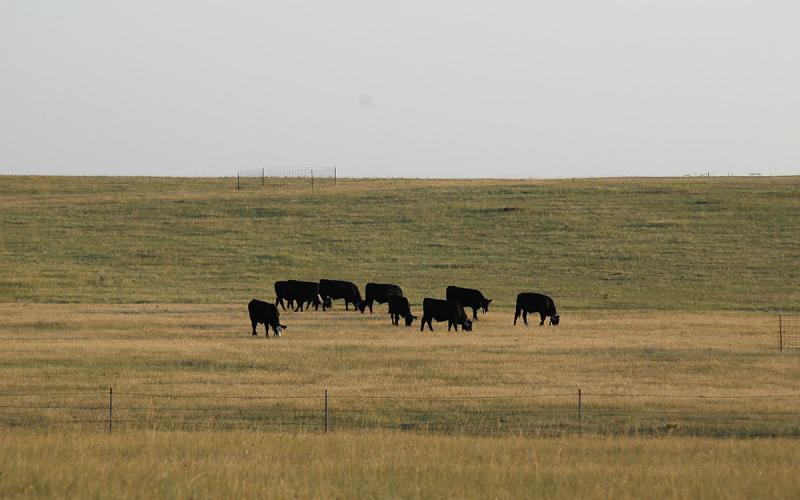Written collaboratively by Dustin Mohrhauser, Keith Underwood, and Amanda Blair.
When thinking about how to improve beef quality and cutability, your first thoughts probably focus on the nutrition and management of the calf from birth through harvest or maybe even the mating selections determined for the breeding season. However, one factor that may have a major role in determining a calf’s carcass quality and cutability is often overlooked – the nutrition of cows during gestation.
Gestation is a very important time for fetal development; however, it is not uncommon for periods of inadequate nutrition to occur during gestation due to fluctuating nutrient availability from pastures, particularly in times of drought. During gestation, there is a tremendous draw of nutrients from the cow to the fetus and, thus, the nutritional status of the mother and the subsequent fetal environment may alter muscle and fat development and, ultimately, offspring carcass characteristics. Therefore, it could be important to maintain cow condition within the suggested body condition score range of 5-6 if possible.
Carcass cutability is defined as the proportion of muscle to fat and bone and carcass quality is greatly influenced by the deposition of intramuscular fat (marbling). The degree of muscling for an animal is determined by a combination of genetic potential and the amount of muscle cells or fibers an animal possesses at birth. Muscling can be selected for through mating decisions but the number of muscle cells cannot be changed after birth, just increased in size. Current research has demonstrated the potential for muscle and fat development to be impacted by maternal nutrition during gestation. Because muscle development appears to occur primarily in early-to-mid gestation, poor maternal nutrition relative to NRC requirements for maintenance during this time may result in fewer muscle fibers or fiber-type shifts. These alterations may cause a decrease in muscle mass and a subsequent decrease in cutability in these animals.
In addition to the potential effects on muscle development, the deposition of adipose tissue (fat) in skeletal muscle may be influenced by maternal nutritional status. Adipogenesis, or the development of fat cells, appears to occur during mid-to-late gestation during fetal development. It is believed that with a greater number of adipocytes (fat cells) within muscle, the potential for increased marbling should also be high. Unfortunately, not meeting the nutritional requirements of the cow may lead to fewer adipocytes within fetal skeletal muscle and, ultimately, lower the potential for high-quality grade carcasses due to less marbling potential.
Fetal programming effects on carcass traits as well as offspring growth are currently a large focus area in beef research. Unfortunately, more research must be completed to fully understand the relationships of maternal nutrition during gestation to the long-term effects on the offspring. These relationships are currently being evaluated in research conducted at South Dakota State University focused on analyzing the effect of maternal nutrition on the expression of genes that influence offspring growth, carcass composition and meat quality.


